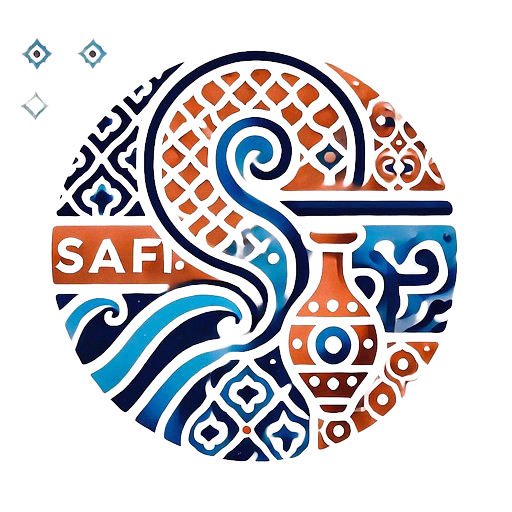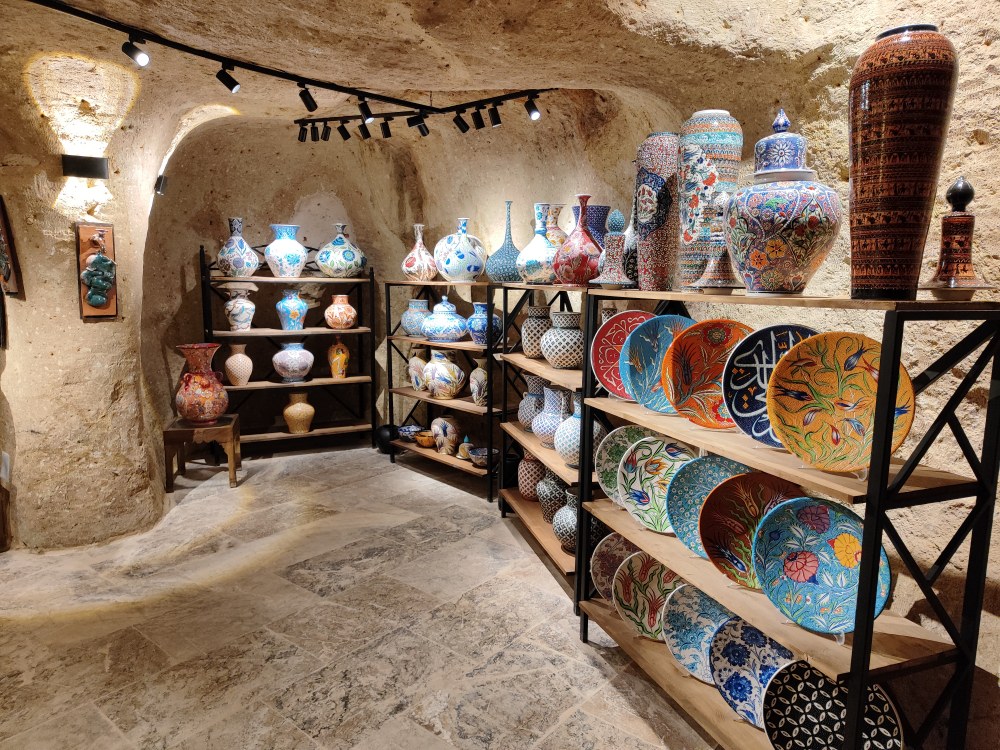Ancient Foundations
Safi pottery is one of Morocco's most celebrated artisanal traditions, with origins that date back centuries. This enduring craft reflects a rich blend of cultural influences and artistic innovation, beginning as far back as the 12th century. Archaeological evidence suggests that pottery-making in the Safi region may have started even earlier, possibly before the rise of the Almohad dynasty. Remains of ancient kilns, tools, and pottery shards provide glimpses into the beginnings of this tradition.
Early pottery in Safi was heavily influenced by Berber motifs and techniques. These simple yet striking designs, often geometric or inspired by nature, became the foundation of Safi's distinctive style. Over time, this local craft incorporated influences from various regions and cultures, evolving into a unique art form that reflects the history and identity of the region. By exploring the origins of Safi pottery, we uncover the story of a craft that has remained central to the region’s cultural and economic life for centuries.
The Rise of Safi as a Ceramic Hub
As Safi grew into a thriving trading hub during the medieval period, the ceramic industry began to flourish. The city’s location along Morocco’s Atlantic coast made it a vital link between inland regions and international trade routes. This strategic position allowed artisans to exchange ideas, techniques, and materials with other regions, particularly Andalusia and the broader Islamic world.
This cultural exchange led to significant advancements in Safi pottery. Local artisans began adopting and adapting new techniques, such as advanced glazing methods and intricate painting styles. These innovations allowed for the production of pottery that was not only functional but also highly decorative. Items such as plates, vases, and tiles became renowned for their durability and beauty, often featuring vibrant colors like cobalt blue, emerald green, and earthy ochre.
One of the key developments during this period was the improvement of kilns. Artisans constructed more sophisticated kilns that could reach higher temperatures, enabling the creation of pottery with finer finishes and greater structural integrity. The introduction of these advanced kilns allowed for the production of larger and more complex pieces, further setting Safi pottery apart from that of other regions.
By combining local traditions with imported techniques, Safi developed a unique ceramic style characterized by intricate geometric patterns, floral designs, and bold colors. This period marked a turning point in the history of Safi pottery, as the city emerged as one of Morocco's leading centers for ceramic production.
Golden Ages and Artistic Flourishing
The later medieval and early modern periods saw Safi pottery reach new heights. The rise of the Saadian dynasty in the 16th century and the subsequent Alaouite dynasty brought increased patronage to Moroccan artisans, including those in Safi. These ruling dynasties appreciated the artistic and cultural value of pottery and encouraged its production both for domestic use and for export.
Under the Saadians, Safi ceramics began to feature more elaborate designs and patterns, reflecting the artistic tastes of the time. Artisans incorporated elements from Andalusian art, such as arabesques and calligraphy, alongside traditional Berber motifs. This fusion of styles created a dynamic and evolving art form that remained rooted in local traditions while embracing new influences.
The Alaouite dynasty, which came to power in the 17th century, continued to support the ceramic industry in Safi. During this period, pottery production expanded to meet growing demand from both local and international markets. Safi ceramics became highly sought after, not only within Morocco but also along trade routes that connected the country to Europe, Africa, and the Middle East. Decorative pieces such as tiles and vases adorned palaces and mosques, while functional items like bowls and jars were used in everyday life.
Safi Pottery in Modern Times
In the 20th century, Safi’s reputation as Morocco’s ceramic capital was firmly established. The city became home to numerous pottery workshops and cooperatives, where artisans continued to produce traditional pieces while experimenting with modern designs and techniques. The establishment of institutions dedicated to preserving and promoting Safi pottery helped to sustain the craft and ensure its transmission to future generations.
Today, Safi pottery is celebrated for its timeless beauty and cultural significance. Artisans use techniques that have been passed down through generations, such as hand-throwing clay on a potter's wheel and applying intricate decorations by hand. These traditional methods are combined with innovative designs to meet the tastes of contemporary markets, ensuring that Safi pottery remains relevant and desirable.
The influence of Safi pottery can be seen in its widespread popularity both within Morocco and abroad. Visitors to Safi often flock to the city’s pottery district, where they can witness artisans at work and purchase authentic pieces. Exported items grace homes and galleries around the world, serving as a testament to the global appeal of this Moroccan craft.
The Crafting Process: A Testament to Artistry
The process of creating Safi pottery is labor-intensive and requires a high level of skill. It begins with the selection of clay, which is sourced locally and carefully prepared to achieve the desired consistency. The clay is then shaped on a potter's wheel, a practice that demands precision and dexterity.
Once the basic form of the piece is complete, it is left to dry before being fired in a kiln. This initial firing hardens the clay and prepares it for glazing and decoration. Artisans apply glazes made from natural materials, such as crushed minerals and oxides, which give Safi pottery its distinctive colors and finishes.
The decorative phase is perhaps the most intricate part of the process. Using fine brushes, artisans paint intricate patterns and motifs onto the pottery, often drawing inspiration from traditional designs. The pieces are then fired again to set the glaze and ensure their durability.
This meticulous process highlights the dedication and craftsmanship of Safi’s artisans, who transform raw materials into works of art.
Cultural Significance and Preservation Efforts
Safi pottery is more than just a craft; it is a living expression of Morocco’s cultural heritage. It reflects the history, identity, and creativity of the Safi region, serving as a bridge between the past and the present. The motifs and techniques used in Safi pottery tell stories of cultural exchange and artistic innovation, making each piece a tangible connection to Morocco’s rich history.
Efforts to preserve and promote Safi pottery have become increasingly important in recent years. Initiatives such as training programs, cultural festivals, and government support have helped to sustain the craft and ensure its continued relevance. Organizations and cooperatives work to support artisans, providing them with resources and opportunities to showcase their work to a wider audience.

A Legacy of Creativity
The history of Safi pottery is a remarkable tale of resilience, creativity, and cultural exchange. From its ancient beginnings to its modern prominence, this craft has evolved while staying true to its roots. Safi pottery embodies the skill and ingenuity of Moroccan artisans, who have preserved this tradition for centuries and continue to innovate today.
By celebrating and supporting Safi pottery, we not only honor the artisans who create it but also contribute to the preservation of a centuries-old heritage. This enduring craft is a symbol of Morocco’s rich cultural tapestry and a testament to the power of art to connect people across time and space. Whether as a functional item or a decorative piece, Safi pottery brings a touch of Moroccan history and beauty into the lives of those who appreciate it.








